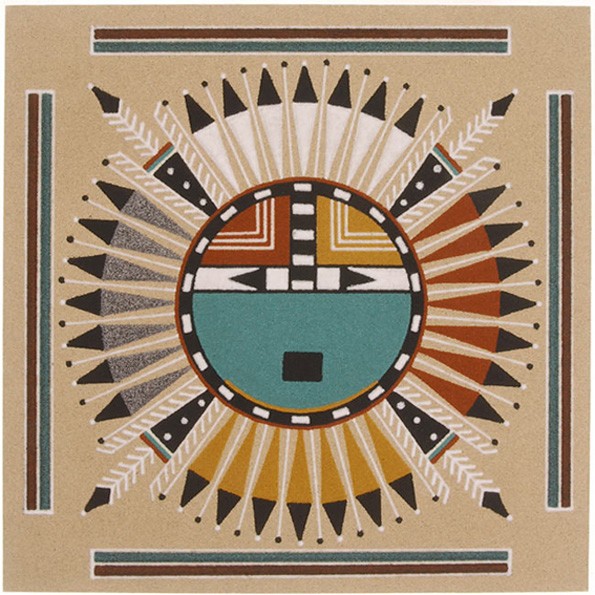Universe
Discover the legends and traditions that inspire the collections.
Browse our photographic stories
Discover the legends and traditions that inspire the collections.
Browse our photographic stories
For her 2021 collection, Marion Parfait drew inspiration from the arts of the American Indians, in particular the designs of Navajo sand paintings, and used Japanese beads to embroider her gilded brass jewelry. Colors such as turquoise blue, red and ivory white, sacred colors for the Navajo Indians, sprinkle the collection with small beaded touches. We find the chevron pattern formed by elongated pearls that evoke small Indian arrows or flower petals.
The association of these two countries so distant and yet so close is an ode to the theme of exploration and discovery. Some Chinese and then Japanese legends are said to have crossed continents when the Far East was linked to western North America.
In homage to the history of the exploration of the American West, the jewels bear Indian names from different tribes populating the American territory, Navajo, Zuni, Hopi, Cherokee, Sioux…
We invite you to follow in their footsteps and to explore with us this territory still wild and full of mysteries.

Sand paintings are magical, sacred and ephemeral works among the Navajo Indians, they are intended to heal upset bodies and souls, reconnecting them to nature and to the World. Their vocation is to recreate harmony between beings. In Navajo, Sand Painting is called “iikaah”, which literally translates to “The place where the Gods come and go”. The symbols constituting the paintings tell the stories and legends of the Indian peoples and their power is so powerful that they allow one to communicate with the Gods and seek their benevolent help. Made by “Medical Men” or Shaman, they are created from colored sand and pulverized stones whose intense colors are carefully chosen. White, red, turquoise, and yellow are the four sacred colors that often accompany the four cardinal points, or the four sacred Navajo plants. These paintings, the complex realization of which takes several days, are drawn in the heart of the Hogan or Tipis, always facing east, where the sun enters. After several days of dancing and sung ceremony, in the early morning, the paintings are carefully erased, and the sacred sand, still charged with magic, will join the dunes of the lonely desert.
Ethical creations
Elements inspired by Native Americans and their arts, used here in our collections, are never reproduced identically as they appear in traditional Navajo imagery or other tribes such as the Hopi and Zuni Indians.
Today, the Indians who sell sand paintings fixed on support, take care never to reproduce the mythological codes and figures such as they are during the ceremonies, in order to preserve the secrecy of their art / medicine, to deprive them of their magic and not to anger the Gods.
In order to create in harmony and respect for their traditions, the figures are also modified here, from drawings already modified by them, so we hope to highlight a traditional culture whose sublime aesthetics gain by crossing the borders and continents, without taking anything away from its authenticity and its primarity.
Each motif used is cited and linked to a reference always specified so that its origin is not forgotten. Four identifiable mythological figures are used within the jewelry, the Rainbow God Navajo, and Father Heaven and Mother Earth Navajo, and the Sun God Hopi and Zuni. It is not about reusing forms blindly and making them cultural appropriation, but rather to pay tribute to these peoples with such a fascinating culture.
For this same reason, part of the profits from sales of Marion Parfait jewelry is donated to a Navajo association located in the United States and whose funds are used to finance schools for young Indians. The designer is also invested in the Navajo France association, to which she makes regular donations, maintains contact with members and participates in their artistic workshops to immerse herself more in Navajo culture in harmony and respect for their values.
Photographe : Anaïs Novembre
Modèle : Cassandre Humbert
Make-up and Hair : Caroline Madison
Nail Artist : Adrienne Soter
